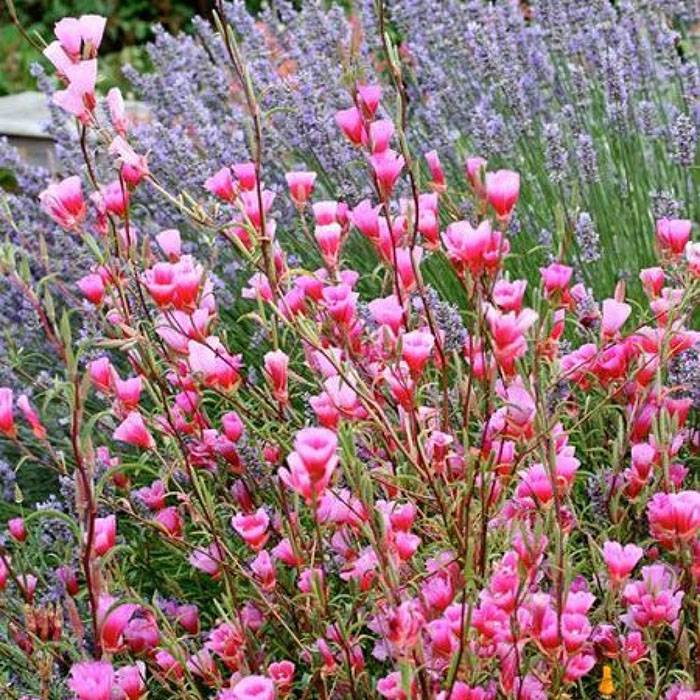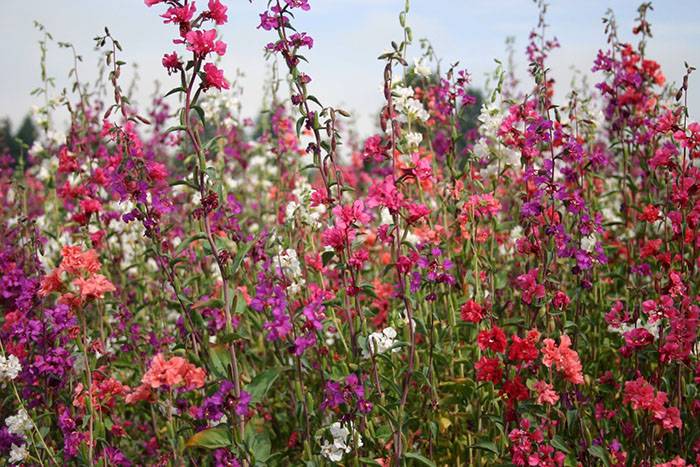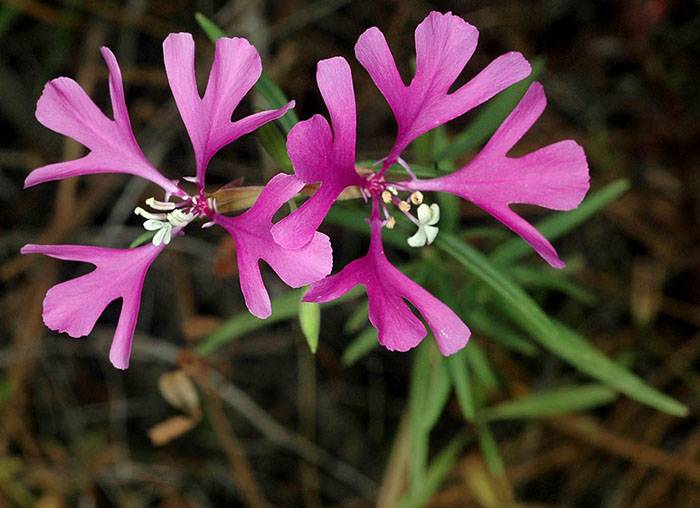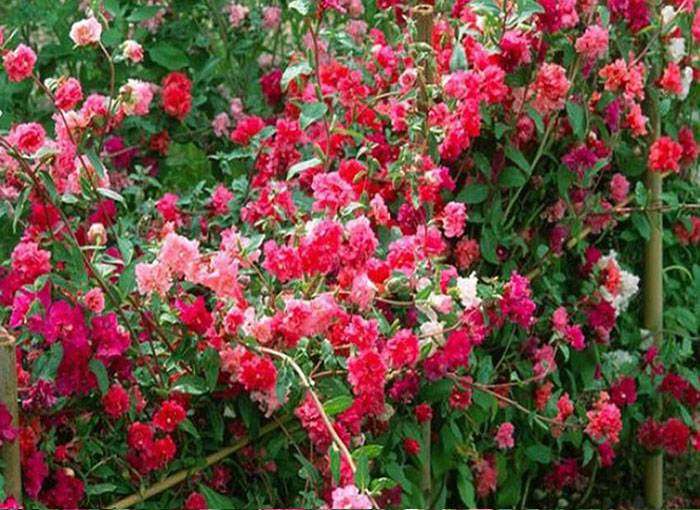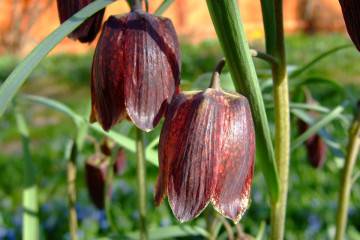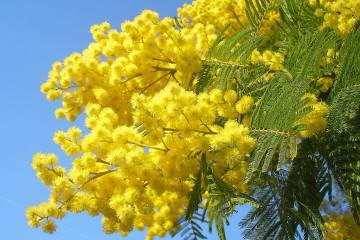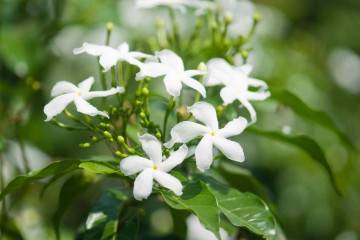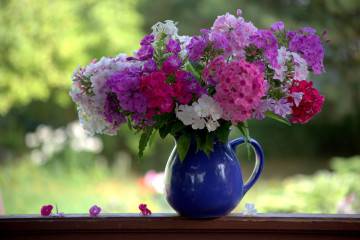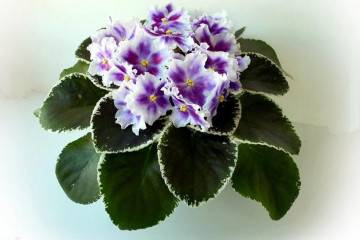Clarkia graceful (Clarkia Unguiculata): what the seedlings and flowers of the plant look like
Content:
An annual ornamental plant from the genus Clarkia Unguiculata is used in the creation of large-scale mixborders and small flower beds. There are some nuances in planting this flower that you should know about in advance.
Plant characteristics
The plant is erect, up to 90 cm in height. The flowers are simple and double, with wavy petals. Clarkia leaves are oval, elongated, green in color. In the axils of the leaves there are flowers about 4 cm in diameter with whole petals. Clarkia blooms, like many annuals, for a long time - from July to October. The fruit of the plant is a four-celled capsule filled with small seeds.
Popular varieties
Clarkia's color allows landscape designers to experiment with color combinations. Lilac, deep pink, salmon and coral specimens allow you to create a pink flower garden in different shades. Monochrome compositions are no less effective. A flower bed made entirely of white flowers invariably attracts attention.
Common varieties of Clarkia graceful:
- Albatross with pure white petals looks especially impressive in the evening or early morning;
- Purpurkenig is a variety with richly colored double flowers. The purple flowers contrast with the green foliage, bringing expression to the floral arrangement;
- Salmon perfection is distinguished by pink double flowers. The bush is large, 80-90 cm in height;
- Sun. This variety has double salmon-colored single flowers. Plant height up to 70 cm;
- Orange is a low half-meter plant. It has double flowers of an impressive orange color.
Clarke species
Clarkia's natural forms are divided into more than 30 species. However, growers use three cultivated types that have given rise to many varieties. In addition to the elegant (or marigold), in the gardens you can find terry and pretty clarks.
Terry has a profusely branching bush with leaves of a dark green hue. The flowers are quite large (5-6 cm) double. The color is varied. The Sakura variety is especially appreciated - clarkia of a delicate peach color.
Pretty is a compact graceful plant 20-40 cm high. Flowers are semi-double, white, pink and salmon. Carved petals. Valued for early flowering, pretty clarkia blooms 2-3 weeks earlier than other species.
Seedling planting
Seed material can be purchased at the store or prepared in the fall if a clarkia flower is already growing in the flower garden. The assortment of purchased seeds is very wide, specimens of different doubleness and interesting colors, as well as mixtures, are presented.
When self-harvesting seeds, the ripe box is removed (its brown color signals about maturity) and small seeds are removed.They are treated with a solution of potassium permanganate.
When grown from seed, clarkia is planted on seedlings when they want to get early flowering (in early June). Step-by-step description of the process:
- In March, the seeds must be planted in a shallow container with soil, moistened and covered with glass or a bag to create an optimal microclimate.
- The seeded containers are placed in well-lit areas.
- Water abundantly during the week. A few days later, friendly shoots are obtained.
At first, clarke seedlings look like tiny sprouts with cotyledon leaves. When 2 full-fledged leaves appear, a pick is made - the seedlings are planted in separate containers. These can be plastic cups or, preferably, peat pots. Until May, when it is time for planting in the ground, the seedlings are kept in a bright place without direct sunlight. Young plants require regular watering.
Clarkia: growing from seed, when to plant
When to plant depends on the temperature conditions in a particular region. Seeds are sown in open ground in April - May. Better early in order to avoid the attack of leaf beetles on young shoots. The soil is prepared in two weeks - the soil is dug up, mineral fertilizing is applied. A shallow groove is made in which the seeds are placed, covering them with a thin layer of soil.
You can sow seeds in the fall. Under a layer of snow, they are well preserved until spring. When the weather is warm, the seeds will wake up and sprout together.
Care features
For planting a flower, an area in the bright sun or in partial shade is suitable. The soil needs light, fertile, without stagnant water. Clarkia care includes timely planting and moderate watering.
The plant needs mineral fertilizing every month. Fertilizers are applied for the first time at the time of bud formation, then during flowering.
To form a lush beautiful bush, pinch the tops. An important condition for growing plants with high decorativeness is the timely removal of wilted inflorescences and leaves, this stimulates the formation of new buds.
In order for the root system of the clarke to be provided with oxygen, loosening is carried out, combined with weeding. Weeds are removed as they emerge. The soil under the clarke can be mulched with cut grass or fallen leaves. This will prevent excessive evaporation of moisture and get rid of weeds.
Since clarkia is an annual plant, after flowering, the aerial part is completely cut off. The earth is dug up, while removing the roots.
Growing problems
Clarkia graceful is a hardy plant. However, the following can spoil the appearance and even lead to the death of the plant:
- fungal diseases;
- invasion of pests;
- violations of agricultural technology.
A fungal disease is signaled by gray spots with a pronounced dark edge. They appear on flowers and leaves. The affected plant parts are immediately removed and destroyed. Tissues without signs of damage are treated with a fungicide.
If small white-coated insects are seen on the plant, this is a mealybug. The parasite greatly weakens the clarke by feeding on its cell sap, so measures must be taken immediately. The preparation rogor-S will help to cope with the mealybug.
Young plants attack leaf flies. They gnaw out parts of the leaf and can quickly kill plants. To prevent the attack of these insects, the seedlings are covered with a non-woven cloth. Already affected specimens are treated with Actara.
In general, clarkia is graceful - a good choice for composing annual flower beds or to complement perennial compositions. The plant is undemanding and with a long flowering period. In flower beds, it is successfully combined with asters, daisies, phlox.
